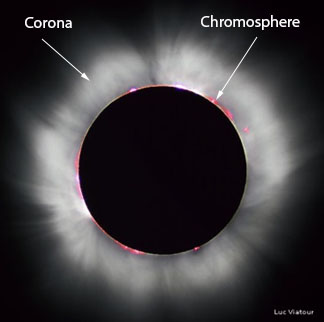
“You must understand how unbelievable this sounded when he proposed it,” said Fausto Cattaneo, a UChicago professor of astronomy and astrophysics. He wrote a paper and submitted it to the Astrophysical Journal the response from scientific reviewers was swift and scathing. “And that’s the end of the story, except it isn’t, because people immediately said, ‘I don’t believe it,’” Parker said. He would later name the phenomenon the “solar wind.” He calculated that if the sun’s corona was a million degrees, there had to be a flow of particles expanding away from its surface, eventually becoming extremely fast-faster than the speed of sound. But scientists had noticed an odd phenomenon: The tails of comets, no matter which direction they traveled, always pointed away from the sun-almost as though something was blowing them away. In 1957, Eugene Parker was an assistant professor at the University of Chicago when he began looking into an open question in astrophysics: Are particles coming off of the sun? Such a phenomenon seemed unlikely Earth’s atmosphere doesn’t flow out into space, and many experts presumed the same would be true for the sun. The science behind what is happening on the sun’s surface is enormously complex read more about it at NASA. The wind would also pose a threat to astronauts traveling through space, so NASA wants to get a better understanding of its properties. It protects us from stray cosmic rays coming from elsewhere in the galaxy-but the effects of storms on the sun’s surface can also affect our telecommunications networks. This flow of particles, called the “solar wind,” has an enormous impact on our lives. These particles, mostly protons and electrons, are traveling about a million miles per hour as they pass Earth. As the sun spins, burns and burps, it creates complex swirls and eddies of particles. The corona is so hot that the sun’s gravity can’t hold it, so particles are flung off into space and travel throughout the solar system in every direction. It is also incredibly active those flares and loops are the halo you see around the sun when there’s an eclipse. The surface of the sun is blisteringly hot at 6,000 degrees Fahrenheit-but its atmosphere, called the corona, is more than a thousand times hotter.

Solar winds always travel away from the Sun, and they are most commonly accompanied by heavy magnetic clouds.

The temperature of Sun’s corona is too high for gravity to keep it down, and it causes solar winds that can reach the speed of 800 km/s (1.79e+6 mph). This happens because of the corona, which is a layer of atmosphere found in all suns and stars. Solar winds are strong air currents blowing from the Sun into space.


 0 kommentar(er)
0 kommentar(er)
